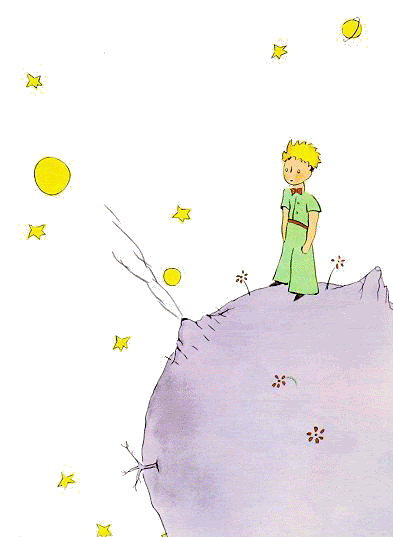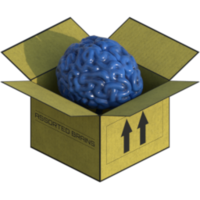Stone Age Story
That girl looks a lot like the one from your story building thread.
Also, why does it jump from 0.2 to 0.9?
Also, why does it jump from 0.2 to 0.9?
I'm sorry. I think that's fine, but wtf?
[size="2"]I like the Walrus best.
WTF what?
It jumps from 0.2 to 0.9 because the bulk
of the story (and the player's decisions
to overcome the challenges) happens between
dawn and dusk.
They don't know how to make ropes yet.
It jumps from 0.2 to 0.9 because the bulk
of the story (and the player's decisions
to overcome the challenges) happens between
dawn and dusk.
They don't know how to make ropes yet.
Seems to me to be a lot like Monster Hunter just that instead of it being about making cool gear out of dead stuff, you just hunt for food to bring back to your amazingly unibrowed 'mate'.
Quote:
Original post by Wai Life on the Flying Pebble
Do you know what would really be cool? If those guys were living on a small 2-D planetoid, small enough that you could walk out of your cave and end up back at your cave in a few seconds. Hence the planet's name, the Flying Pebble - kind of like this:

(from the The Little Prince, pretty interesting story that takes place on small planetoids)
Or this:
No One Can Stop The Farm Pioneer
[url="http://groupgame.50.forumer.com/index.php"][/url]
I intended to tell a story about the history of family and interpersonal relation
by showing the actual roots instead of using metaphors or hypothetical scenarios.
So while a dream-like world would be cool it would deviate from the purpose.
I want to construct minimum scenarios for the player to experience the factors
that shaped how people live. I don't want the player to be amused by the
scenarios. I want the player to play the game knowing that each scenario is
modelling a truth about humans. I want the player to first experience the
environment, then compare the conclusion with the truth that is revealed at
the end of each chapter.
What do you think about this type of goal in game design? I think that this
type of design goal is common in writing, where while the writing itself is
interesting to read, the writing itself serves a primary purpose that is
different from giving the reading pleasure or to satisfy escapism needs.
Chapter 1 - Bring Food Home!

Hubby leaves home to find food. He could go to the plains, to the canyons
or to the mountains.
by showing the actual roots instead of using metaphors or hypothetical scenarios.
So while a dream-like world would be cool it would deviate from the purpose.
I want to construct minimum scenarios for the player to experience the factors
that shaped how people live. I don't want the player to be amused by the
scenarios. I want the player to play the game knowing that each scenario is
modelling a truth about humans. I want the player to first experience the
environment, then compare the conclusion with the truth that is revealed at
the end of each chapter.
What do you think about this type of goal in game design? I think that this
type of design goal is common in writing, where while the writing itself is
interesting to read, the writing itself serves a primary purpose that is
different from giving the reading pleasure or to satisfy escapism needs.
Chapter 1 - Bring Food Home!
Hubby leaves home to find food. He could go to the plains, to the canyons
or to the mountains.
Quote:
Original post by Wai
What do you think about this type of goal in game design? I think that this
type of design goal is common in writing, where while the writing itself is
interesting to read, the writing itself serves a primary purpose that is
different from giving the reading pleasure or to satisfy escapism needs.
In terms of the goal it seems similar to the growing market for serious games, so I don't see a problem there.
I do wonder whether or not the mode of depiction you've chosen will interfere with the message. You've chosen to use cartoon pixel art, which to me looks nice in and of itself but makes me think that you're subject matter should be whimsical. That may create a barrier to understanding (unless this was for a captive audience such as students who have to use the game).
In terms of the underpinnings of a game I think you'd need to explain more about what exactly makes it a game as opposed to a process that's following the rules you've outlined. Are there risks associated with going to the plains, canyons or mountains? Is there an underlying strategy that maybe will make me think like a paleolithic hunter? I'm just not getting that so far.
--------------------Just waiting for the mothership...
I don't think that the depiction would interfere the message.
I think of it this way, facts itself don't have flavor, the
presentation of the facts sets its flavor. I also think that
if the fact itself is grim, a contrasting presentation could
have a balancing effect.
In that case, you use something that the player feels safe to
explore subjects that would be otherwise threatening to
explore.
In the concept of the Stone Age story, the safety zone is the
style of the pixel art and the familiar platformer gameplay.
The presentation could have taken a realistic approach using
realistic 3D models. But that would be the same reason that
people don't just pick up a history book and read it.
This is an webcomic about middle east conflict. It has the same
effect by using a zone of safety (for reader who are familiar
with that art style) to help the reader through a sequence of
historical development.
The differences between the stages:
The plains has the biggest animals. However, unlike the professional predators
like the lions, hubby has no claws, no sharp teeth, and no speed to pursue an
animal. Even lions hunt in groups, there is no way hubby could score one of
those big animals home alone (or is there?)
>> Hubby throws pebble at Elephant.
>> Elephant is enraged.
>> Elephant stomps hubby. Hubby takes 2900 HP damage.
>> Hubby is defeated.
When the player tries to hunt an elepant the player could get a sequence of
events like above. That result occurs because the player is exploring, or
wrongly assumed wild lives relatively easy to defeat. This sets the paleolithic
mindset where wild lives are very dangerous, and human dominates nowhere.
It is a period when life is not safe and human is a species barely surviving,
(until...)
The canyons and mountains have different animals to give a different dynamic.
The canyons has small animals, it is safer but it is dry and has little food.
The player would play and discover which environment has the best chance
to get the most food home. The chapter ends with a fact reflecting the player's
encounter.
I think of it this way, facts itself don't have flavor, the
presentation of the facts sets its flavor. I also think that
if the fact itself is grim, a contrasting presentation could
have a balancing effect.
In that case, you use something that the player feels safe to
explore subjects that would be otherwise threatening to
explore.
In the concept of the Stone Age story, the safety zone is the
style of the pixel art and the familiar platformer gameplay.
The presentation could have taken a realistic approach using
realistic 3D models. But that would be the same reason that
people don't just pick up a history book and read it.
This is an webcomic about middle east conflict. It has the same
effect by using a zone of safety (for reader who are familiar
with that art style) to help the reader through a sequence of
historical development.
The differences between the stages:
The plains has the biggest animals. However, unlike the professional predators
like the lions, hubby has no claws, no sharp teeth, and no speed to pursue an
animal. Even lions hunt in groups, there is no way hubby could score one of
those big animals home alone (or is there?)
>> Hubby throws pebble at Elephant.
>> Elephant is enraged.
>> Elephant stomps hubby. Hubby takes 2900 HP damage.
>> Hubby is defeated.
When the player tries to hunt an elepant the player could get a sequence of
events like above. That result occurs because the player is exploring, or
wrongly assumed wild lives relatively easy to defeat. This sets the paleolithic
mindset where wild lives are very dangerous, and human dominates nowhere.
It is a period when life is not safe and human is a species barely surviving,
(until...)
The canyons and mountains have different animals to give a different dynamic.
The canyons has small animals, it is safer but it is dry and has little food.
The player would play and discover which environment has the best chance
to get the most food home. The chapter ends with a fact reflecting the player's
encounter.
This topic is closed to new replies.
Advertisement
Popular Topics
Advertisement
Recommended Tutorials
Advertisement









